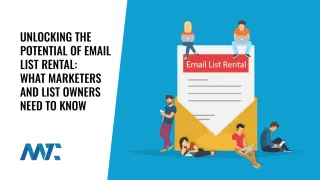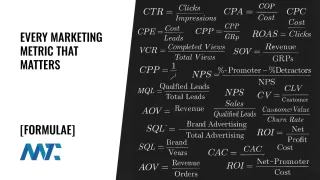
Once every month or so, we hear the same complaint from prospects who are working with inbound marketing agencies and clients that are working with us on their inbound marketing efforts. Not to mention that this complaint is one that I’d make myself with our agency if I didn’t understand how inbound marketing actually worked.
Complaint: We’re not getting any business from our website.
There is a serious problem in the inbound marketing industry regarding how it’s explained and how inbound marketing actually works. The notion that establishing a web presence will turn your website into an engine where prospect after prospect will find you on search or social, read your material, and instantly fill out a form on your website is not the reality. It’s sort of how it works, but the majority of businesses never take this route.
Prospect Behavior
Let’s discuss buying behavior first. We’ve written about micro-moments and customer journeys before; I’d encourage you to read that article. The fact is that people don’t find you in search results, visit your home page, and buy your services with that simplicity.
If you’re a service company (like our agency), here’s how a purchase journey often works:
- Word of Mouth (WOM): A client often mentions us to their colleague when they’re looking for assistance that we can provide.
- Search: The prospect searches online for your business and finds your website and social.
- Website: The prospect visits our website. They are evaluating our expertise, the resources that may assist them in making a decision, the team they’ll be working with, and the credentials or customers we’ve already worked with.
- Content: The prospect reads your content and may even download or request additional information.
- Follow: The prospect sometimes connects with us socially, sees what kind of work we’re doing, asks people in our network how we work, and whether or not we can handle their problem.
- Subscribe: Often, the prospect isn’t in a position to buy, but they are conducting research, so they subscribe to your newsletter to stay informed and receive valuable advice.
- Meet: The prospect connects with us through a referral relationship to receive a personal introduction. After meeting, they determine whether or not they trust us, and we start doing business.
- Or Contact: Sometimes the prospect contacts us directly via email or phone to set up a meeting with us.
Given that process, do you see where inbound marketing fits and what it’s providing your business? That’s quite a different funnel than what inbound marketing sites often share, which is:
- Search: The prospect searches a topic and finds your site ranked.
- Download: The prospect visits your site and downloads collateral.
- Close: The prospect requests a proposal and signs the contract.
Inbound Marketing ROI
Given this range of behavior, can you see how difficult it is to attribute your inbound marketing to your overall sales and marketing strategies? If you have an outbound sales team, virtually every sale is attributed to that team, especially if they’re experienced and already nurturing relationships with prospects you wish to do business with.
The questions for inbound marketing need to include:
- When you close a prospect, did they visit your site in the sales process?
- When you close a prospect, did they sign up for a newsletter?
- When you close a prospect, did they download or register for content?
- When you close a prospect, did they search for you online?
It’s not that you can attribute the entire sale to their inbound marketing visit, but not recognizing its impact on the sales cycle is an unfortunate mistake. Here are some statistics from one of our clients who is wondering:

These stats filter out any bot or ghost bot traffic and provide a year-over-year snapshot of their website analytics. The previous year’s website was slow and had some broken elements, which was unfortunate for a technology company. They were found in 11 search results outside of their company name, 8 of which were on page 2. And even their company name was mixed in with some similarly named companies. Now they dominate the search engine result page.
Now, Google displays a complete company profile, including their social profiles, and an extended company description with sublinks on the search engine results page. They rank for 406 different keywords, with 21 on page 1, 38 on page 2, and the rest continuing to gain traction as they build authority through organic search.
How are You Helping?
Inbound marketing isn’t a hands-off approach for a business.
- Are your employees promoting your content online?
- Are you enlisting the assistance of public relations to promote the strategies online?
- Are you paying for online content promotion?
- Is your sales team utilizing the content to help close their prospects?
- Is your sales team providing feedback on content that helps or content that doesn’t?
I think companies are absolutely nuts when they have dozens of employees and no one is promoting the content the company invested in. Advocacy is crucial as you expand your reach. If I see a friend or colleague promoting their business and I’m in the decision-making stage, I’ll check out what they have to offer.
Conclusions
Inbound Marketing is no longer an option. We recently met with a prospect who has been advertising online for 15 years without a website. They informed me that the cost per lead (CPL) increases every year, while their close rate continues to decline. People are hesitant to do business with them because they have no web presence. Now they’re asking us how they can make up for those lost years that they didn’t invest. They said that they’re getting beaten by competitors who have great sites, dominate search results, and are engaging on social media.
Short answer: They can’t compete right now.
However, they can begin investing in inbound marketing that will generate momentum, let them close more sales with authoritative content, and continue to drive attention and awareness to their brand online. Yes, crappy leads will come through at first, but over time, they’ll close more leads, take less time, and save a significant amount of money.
It’s no longer a matter of debate whether inbound marketing works. Every major company is investing more and more into their content, search, and social strategies as they continue to see the return on investment. The argument is how you quantify and attribute the return on that investment.
If you have invested in inbound marketing and are seeing poor lead flow or poor quality leads, are you paying attention to other information?
- How many prospects are visiting your site since implementing your inbound marketing strategy?
- How many prospects signed up for your newsletter since implementing your inbound marketing strategy?
- How many prospects downloaded or registered for content since implementing your inbound marketing strategy?
- How many prospects searched for you online since implementing your inbound marketing strategy?
- How large are your sales closes since implementing your inbound marketing strategy?
- How long has your sales cycle been since implementing your inbound marketing strategy?
Inbound marketing is having a demonstrable impact on the overall sales and marketing of every company across every industry. However, it doesn’t work in a vacuum; it complements your outbound and other sales and marketing strategies. To maximize ROI, you must be dedicated and work to ensure you are building momentum and establishing authority in your industry. Growing your readership, expanding your network, and growing and sharing with your social following —all of this takes an incredible amount of time and effort.
I’m not selling a program that I don’t believe in. I’m selling a system that has helped our agency grow its reach and revenue for 7 years straight. And we’ve done the same for dozens of marketing and technology companies. Those who appreciate the value and effort in the long term recognize the results.
Our industry (including our agency) needs to do a better job of educating clients and providing all the statistics that prove that the inbound investment is the best investment a customer can make in their marketing efforts.







